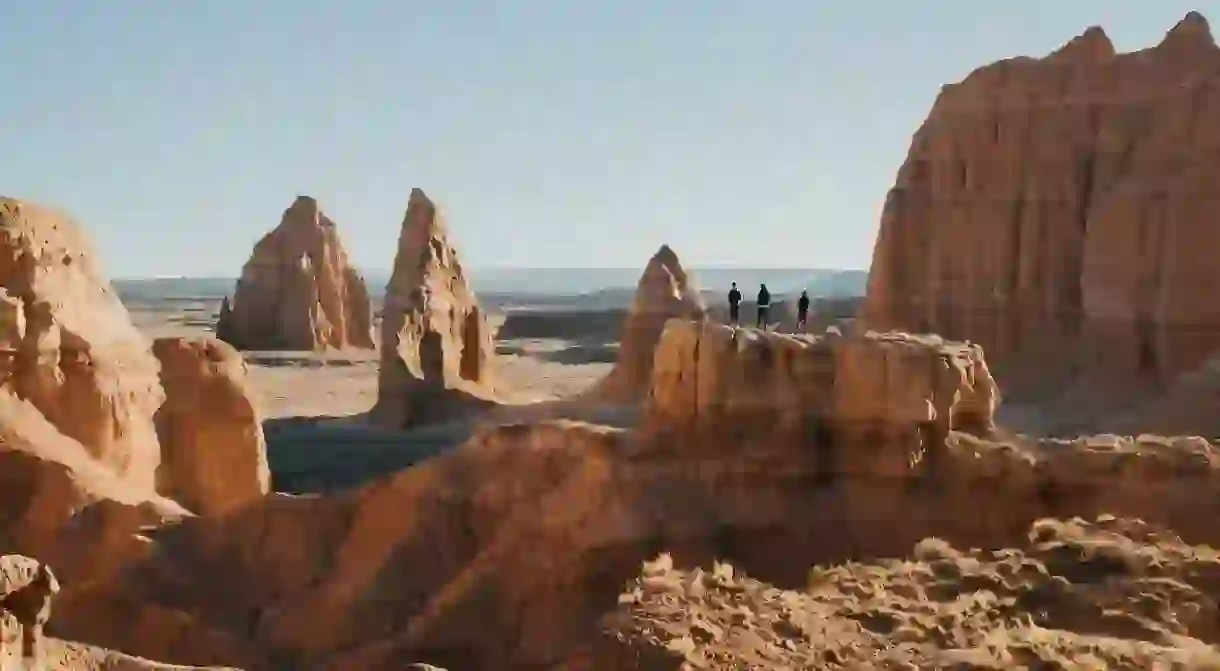Utah's Most Spectacular National Reserves

Explore the surreal great outdoors of Utah and witness millions of years of natural beauty in the making amid rugged red rock formations, ethereal arches, water-carved sinews and precipitous wind-whittled cliffs, spires and hoodoos. This state is the perfect getaway for nature lovers, outdoor enthusiasts and geological aficionados.
Did you know – Culture Trip now does bookable, small-group trips? Pick from authentic, immersive Epic Trips, compact and action-packed Mini Trips and sparkling, expansive Sailing Trips.
Arches National Park

Arches National Park is home to the world’s largest proliferation of arches – there are over 2,000 of them – and one of Utah’s most iconic landmarks: the Delicate Arch. It’s an instantly intriguing geological formation that you’ll want to see from afar – and up close.
There are dozens of trailheads to suit various skill levels or time constraints: from the longer routes such as the Double O Arch or Tower Arch to easier routes like the Park Avenue Trail – or anything in the Window Section. After hiking the maze of snaking trails through the park or taking a guided tour of the Fiery Furnace, you can pitch up in one of the nearby campgrounds or visit the nearby town of Moab – rich with mountain-biking trails if you’re looking for a little more adventure.
Bryce Canyon National Park

Also known as Hoodoo Country, Bryce Canyon National Park contains a series of rose-colored cliffs, red-rock hoodoos and spectacular natural amphitheaters that you can admire while navigating a 38mi (61km) scenic drive loop – or on foot or horseback via the many hiking trails.
Bryce’s otherworldly formations and mystical hoodoos are something you won’t forget. In addition to ranger programs – which include geological history, full moon hikes, snowshoeing and more – there are also astronomy programs and great swathes of backcountry to explore at your own pace.
Capitol Reef National Park

Deemed the “land of the sleeping rainbow” by the indigenous Navajo, Capitol Reef National Park showcases an incredible blend of surreal landscapes embroidered with red Entrada and white Navajo sandstone. These sandstone reefs and canyons are known for their rock art petroglyphs which illustrate the indigenous history of the region.
It’s also a center of 19th-century Fremont Culture which you can learn more about at the historic Gifford Homestead. Stroll past ancient fruit orchards, hike the surreal and rock-formed Hickman Bridge – or the more challenging Cohab Canyon – or get to grips with other activities such as astronomy, fishing and bicycling.
Zion National Park

Quite literally meaning “the promised land”, Zion – whether you’re religious or not – contains some of the most amazing scenery you’ll likely ever lay eyes on. Its water-carved landscapes, whittled by the Virgin River, are laden with looming rock towers, sandstone canyons and precipitous cliffs. If you’re looking for thrills by the bucket load, you’ll find no shortage of them here: think repelling, swimming, rock-climbing and hiking – for all fitness levels.
Hikes include the Emerald Pools – a family-friendly 3mi (4.82km) hike – and more challenging trails like the Narrows and the Subway, which actually require a permit. The 5mi (8km) Angel’s Landing hike offers incredible views of the park – although you’ll need to cross a very narrow chain bridge to get to the best vantage points.
There are several campgrounds in Zion National Park and a shuttle bus that brings passengers to and from the town of Springdale for access to the park entrance.
Monument Valley

Located in the southeast of Utah, Monument Valley sits in the heart of the Navajo Nation as an icon of the American West. Often featured in Hollywood westerns, this rugged and dramatic red landscape brims with culture, boasting the Goulding Film and Cultural History Museum in Goulding’s Lodge, the Dinosaur Museum in Blanding, the Newspaper Rock National Historic Site and the Bluff Fort Historic Site – which displays the legacy of trailblazing settlers.
If visiting, you can go on guided Jeep tours for a more adventurous experience of the valley’s red giants. And be sure to wake up early to catch the sinuous shadows of the Natural Bridges National Monument which houses three flowing-water-sculpted bridges, including Sipapu – the second largest natural bridge in the world.
Canyonlands National Park

Deep canyons flank the piercing colors of Utah’s Green and Colorado rivers, which bend and meander through Canyonlands National Park to reveal towering mesas, pinnacles, spires and cliffs looming over scarlet rock. Containing three districts, Canyonlands is the largest national park in Utah and certainly one of the most staggering when it comes to natural phenomena.
The Dead Horse Mesa Scenic Byway and the Dead Horse Point State Park tower 2,000ft (609m) above the winding Colorado River. You can hike the steep and strenuous White Rim for the loftiest views – or traverse the Grand View Point’s 2mi (3.2km) loop for less of a challenge. There’s also the option to drive the 20mi (32km) of paved roads if you’d rather take in the scenery from an air-conditioned vehicle.













